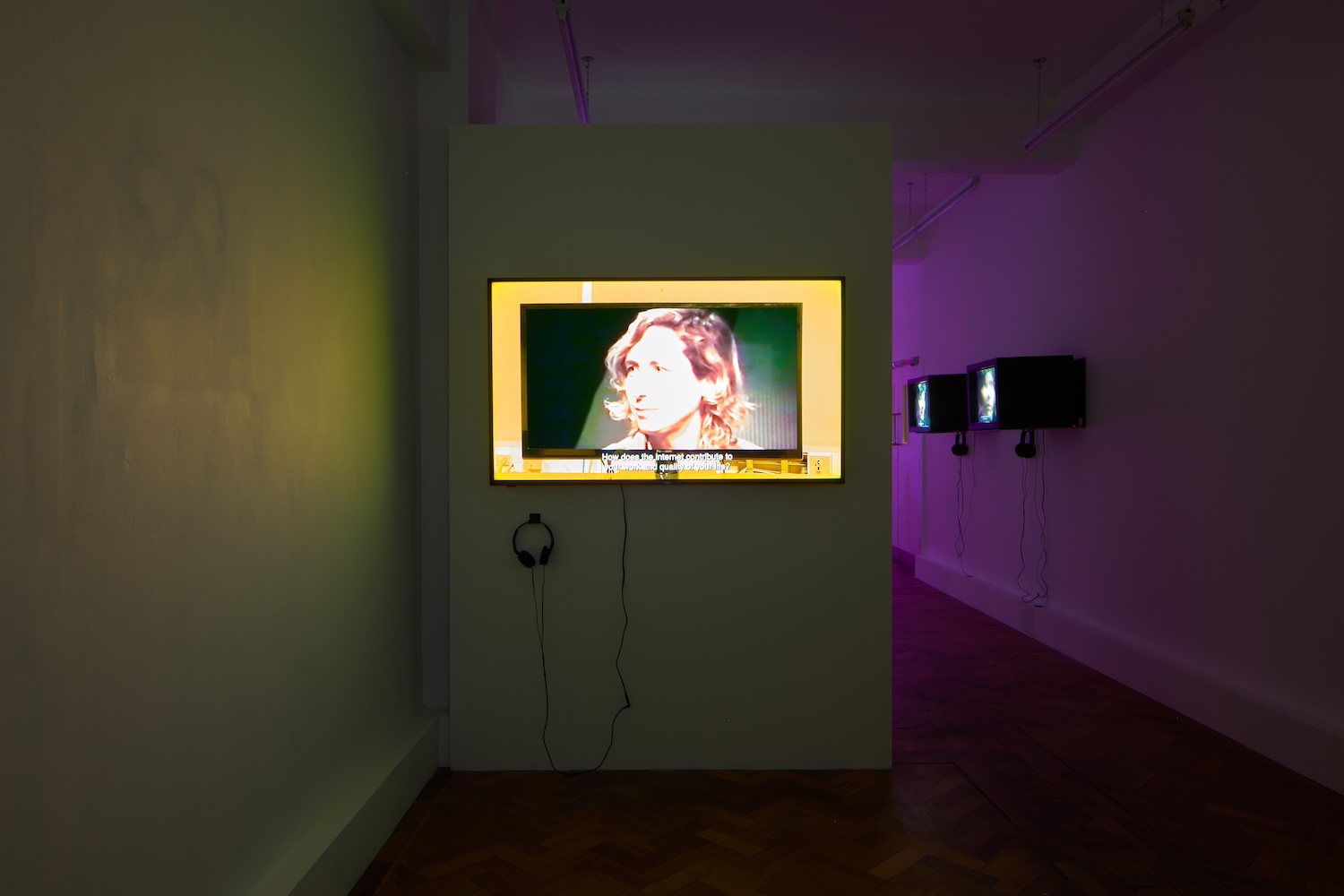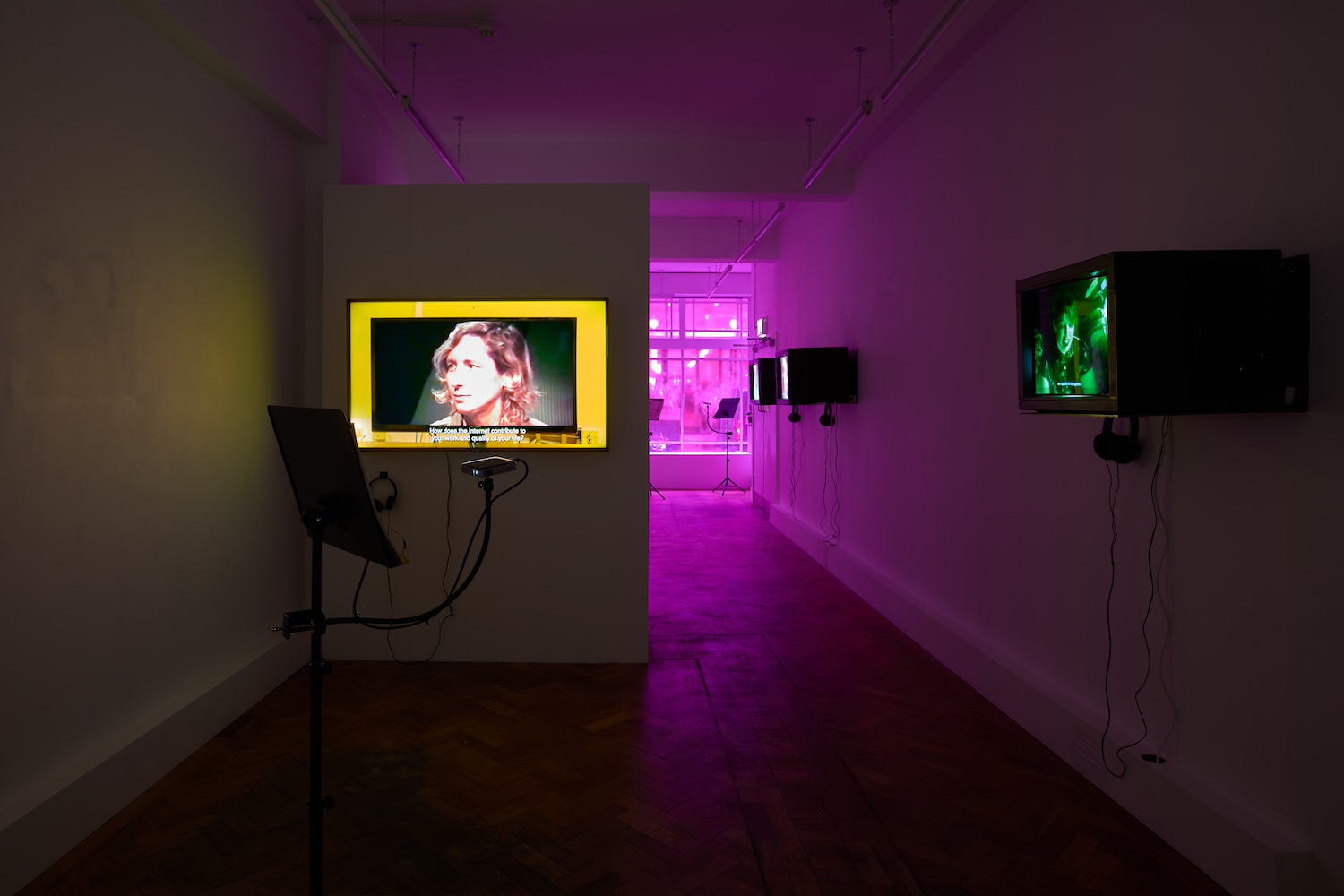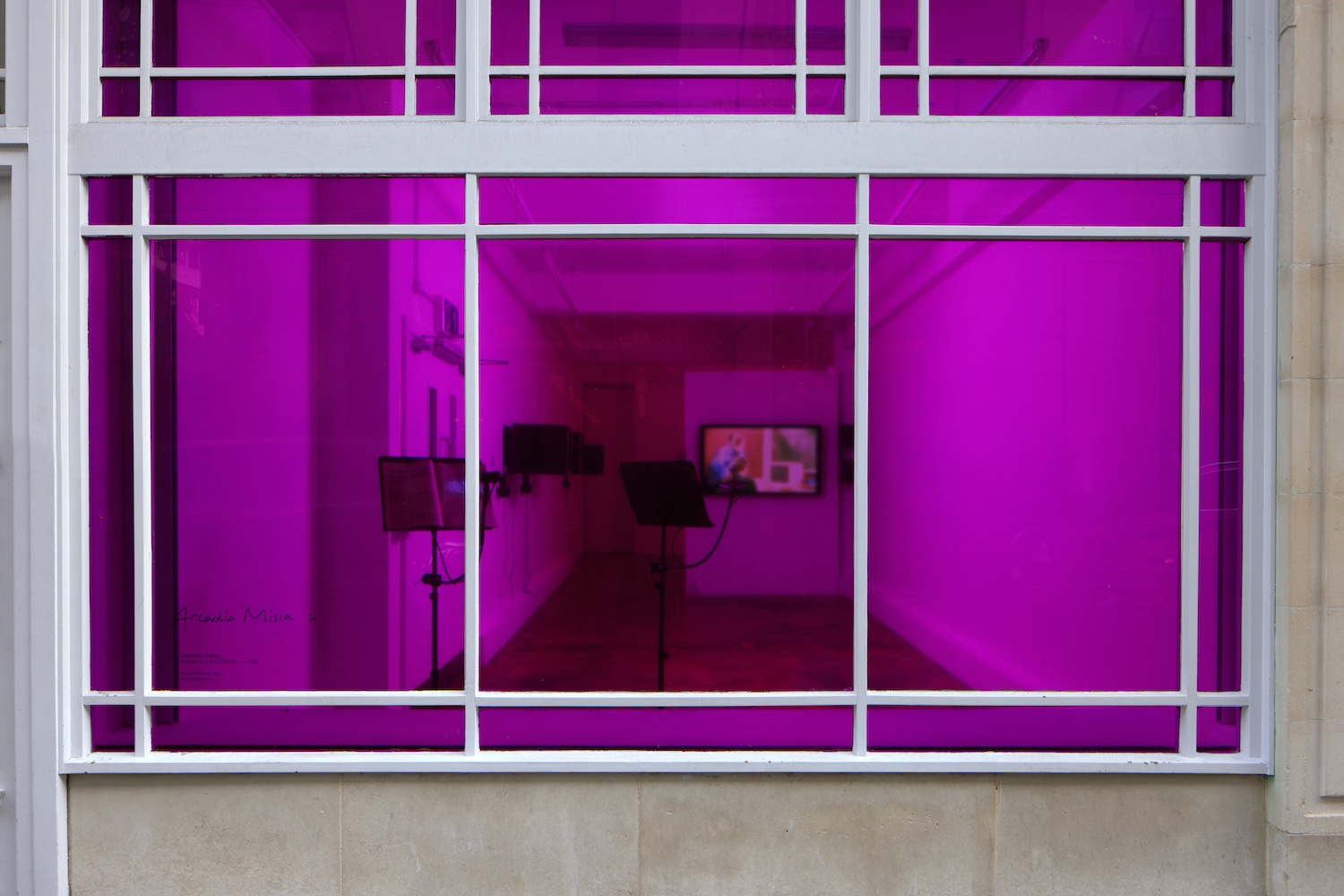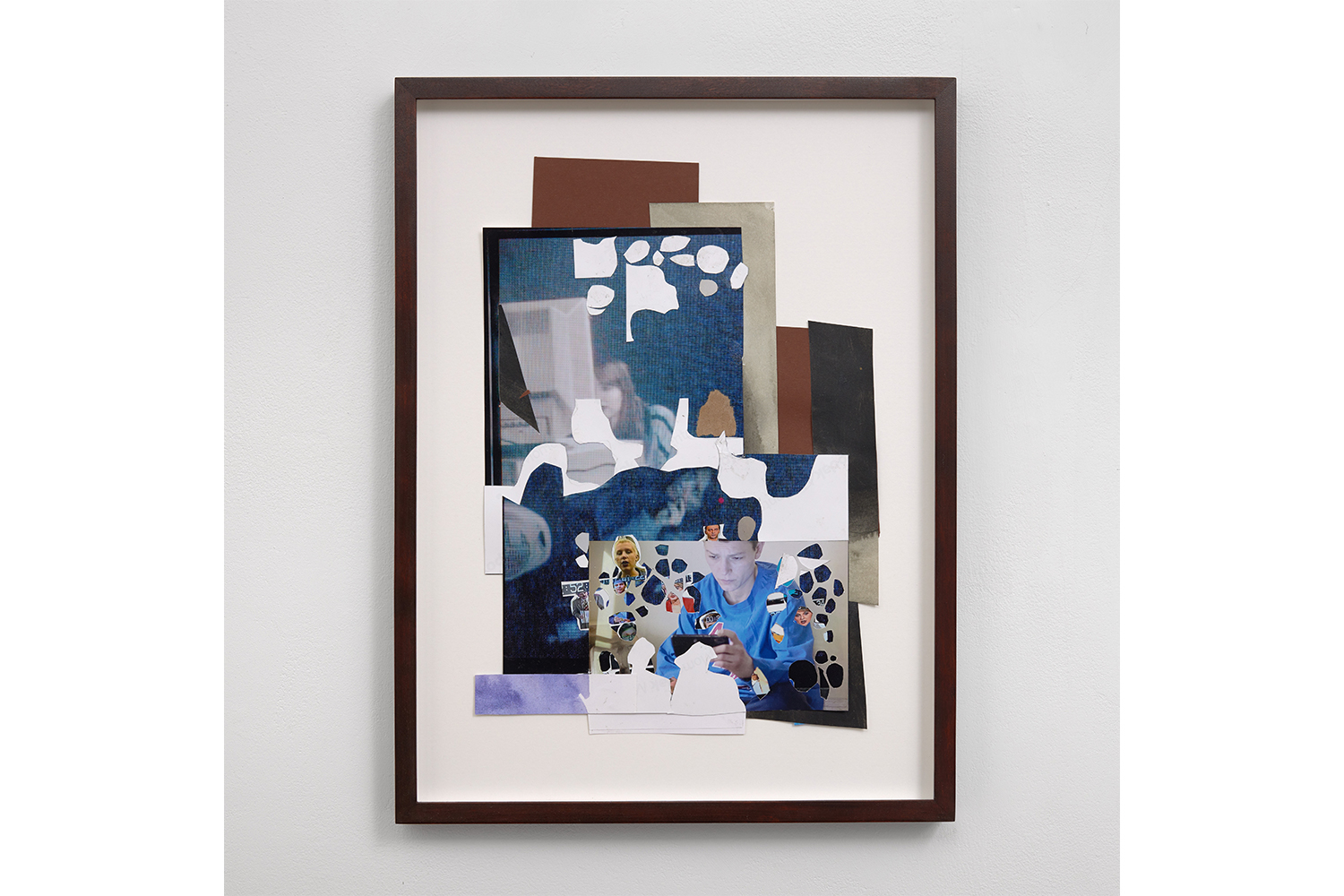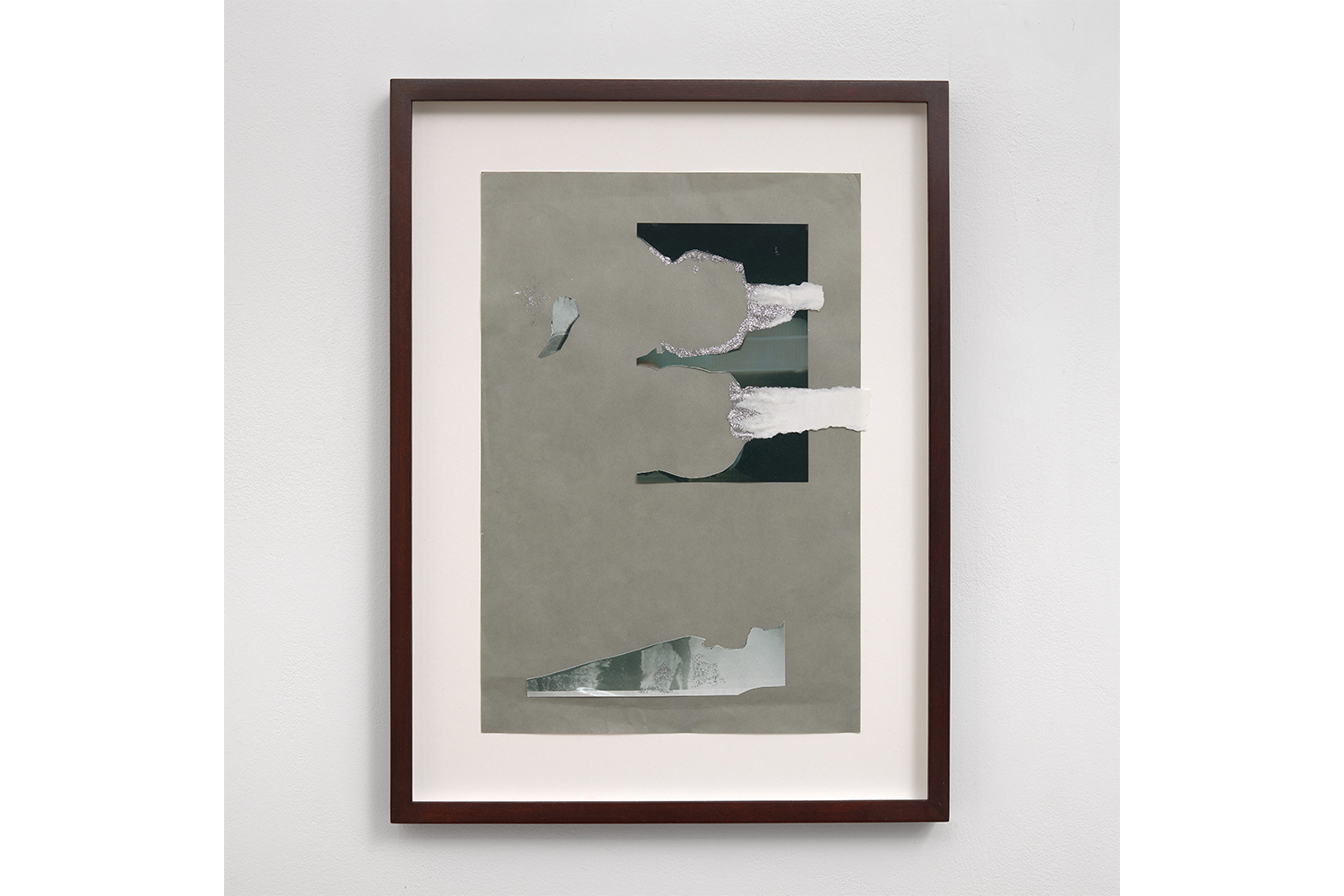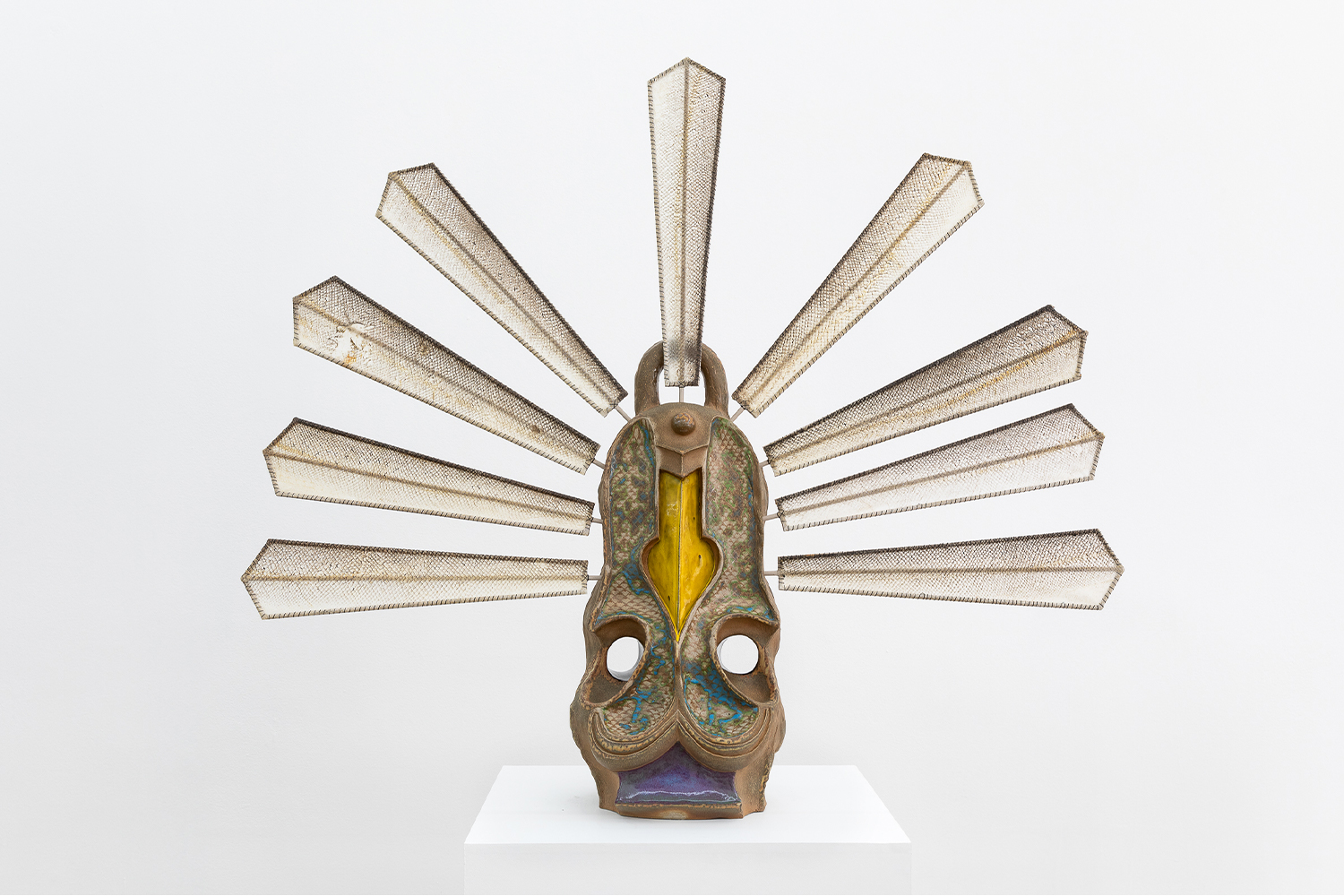Croatia-based artist Maja Čule’s new work Electronic Witches (2023), a multichannel video installation currently on view at Arcadia Missa, London, splices together archival footage and contemporary reenactments of a little-known history of war-torn former Yugoslavia, in which a transnational email-based peace movement ran on hacked dial-up networks, and women taught women how to email.
The Socialist Federal Republic of Yugoslavia linked up to global electronic networks in the late 1980s. But in 1991, Croatia seceded from Yugoslavia and, amid escalating sieges and massacres, the Yugoslav People’s Army severed the public telecommunications infrastructure.1 In 1992, the same year the Croatian Academic Research Network joined the world computer network, United Nations Security Council sanctions cut off Serbian internet access.2 Civilian reporting of war crimes and peace-building efforts were near impossible.
Upon Croatian independence, the Anti-War Campaign Croatia (ARK) formed an alliance of twenty-two human rights organizations across former Yugoslav countries. Bypassing military control of communications, ARK established ZaMirNET, an email bulletin board service (BBS) for human-rights groups to exchange transnational messages.3 Yet while ZaMirNET grew within ARK, a network base for women-led peace organizations, many of those women had never used a computer.
Čule’s show at Arcadia Missa draws from a feature film and ongoing research. Seven videos are shown across multiple screens, some of which flicker above archival issues of the Croatian computer magazine Računari. We follow Nina Williams and Lena Robertson, who introduce themselves on a talk show. Later, a candid scene shows them on the floor in the shadows, limbs intertwined, a large white computer to their left. Nina says to Lena, “You are just the most beautiful thing I’ve seen […] Where are you from? America or England? Because you are switching between the two!” Lena replies between laughter and kisses.
Nina and Lena are proxies for activists Kathryn Turnipseed and Cecilia Hansen, who created the first ZaMirNET training manual for women users. Known as the Electronic Witches, their programs reacted to wartime Croatian media’s portrayal of women as helpless victims. “Rarely do journalists widen their view to include pictures of women in all our diversity taking effective action [like] the woman who lives in a refugee camp and is learning to use computers,” wrote Turnipseed in 1996.4 Computers had been claimed and mystified by state media as part of the male nationalist machine, but the Witches saw email as “a tool” for women to tell their stories and “bring to light the ways that silence can be violent.”5
The Witches’ action was mirrored by activists working overseas. In 1991, Adelaide-based art collective VNS Matrix was founded. The collective intended to puncture the prevailing “big daddy” discourses in a nascent cyber space and “hijack the toys from techno cowboys.”6 Čule brings the Witches and the VNS Matrix’s cyberfeminist manifesto in concert. In one film, the manifesto is read in broken Croatian (Čule’s cast is predominantly queer first-time actors for whom Croatian is not their mother tongue). Čule evidently revels in linguistic slippages and technical glitches. In another, a typo-riddled AI-generated transcript of a conversation between Čule and a Witch (either Kathryn or Cecilia) covers unstable internet connections, computers that can’t launch Zoom, and the Witch wondering “if I even remember it correctly.” This layered, corrupted chorus of (mis)communication, forgetting, and silence weaves through archival and staged footage. Reality and reenactment are intentionally destabilized. The “real” television shows fetishizing computers are really masturbatory propaganda performances, while the salvaged and staged footage of Witch workshops provide a glimpse of the on- and offline realities of Croatian women. “I hope to use my new email skills to meet new people and join […] lesbian chat rooms,” says one workshop participant, cutting through another layer of silence within Croatia. “If you are a lesbian in Croatia today, you are forced to live in total isolation […] isolated from society, from each other,” wrote Andrea Spehar (founder of Lesbians and Gay Men Action, Zagreb) in 1994.7
Email offered international solidarity, enabling queer internet users to evade censorship and write themselves into life and society. Today the urgency to speak against silence endures, and the tools have adapted; the interactive website Queering the Map has first-hand notes from queer Palestinians pinned to locations in Gaza — where they had their first kiss, where their lover died. And on social media, a legacy of Electronic Witches — Bisan Wizard, Plestia Alaqad, Hind Khoudary and more — report (in English and mother tongue) from Gaza and fight for self-determination: “This is Bisan, and I am still alive.”8
Čule’s Electronic Witches transcends the specifics of its originating context to transmit an alternate history — and future — of sexuality, technology, and warfare. Blackouts and shadow bans are not monolithic; there will always be a glitch through which to send and receive messages of survival.


